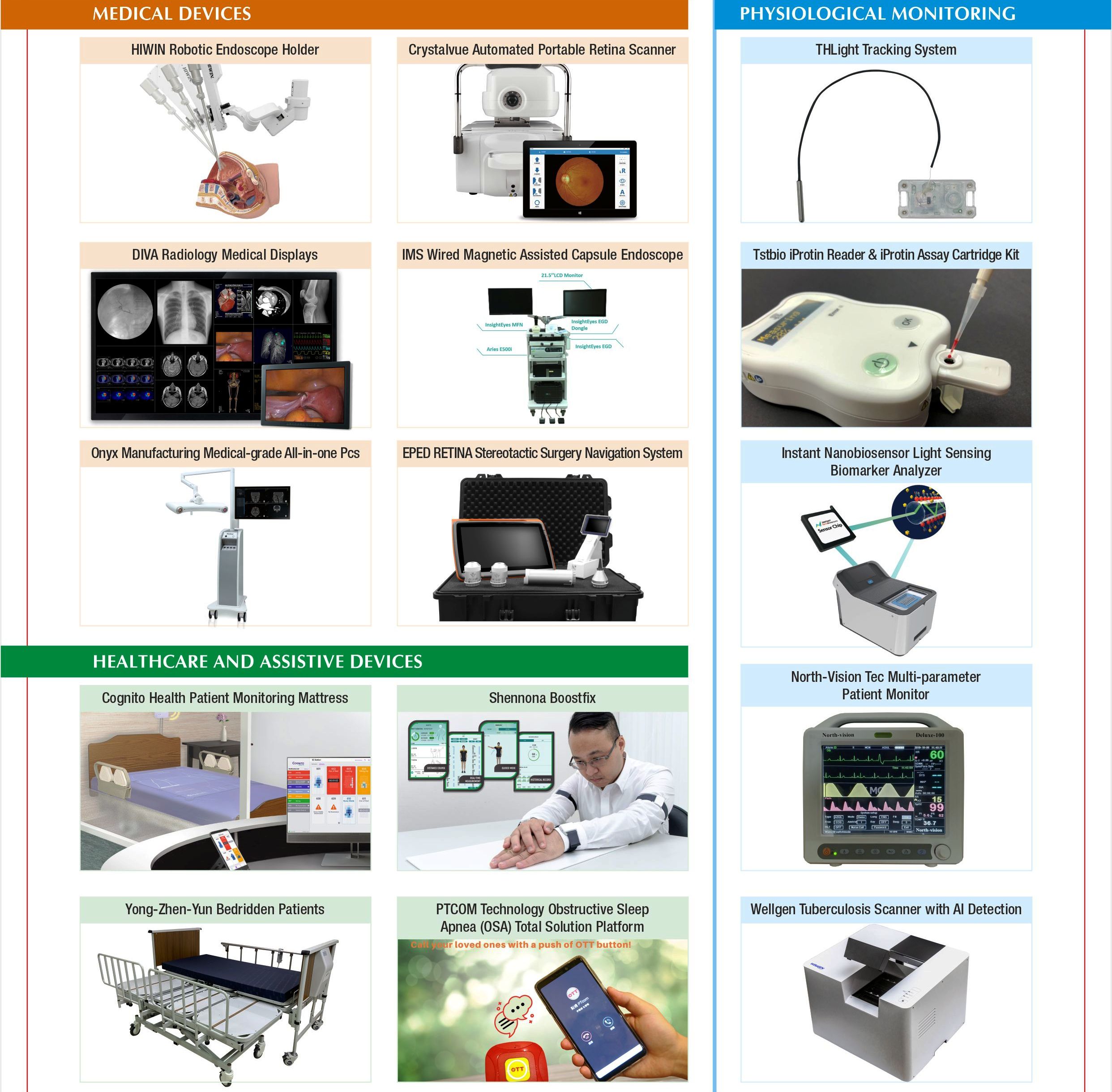Industry Speaks
Technology solutions from Taiwan to enable effective healthcare delivery

The global healthcare system is facing an unprecedented challenge in the post-Covid situation. Almost all areas of healthcare are facing challenges in providing quality service while simultaneously maintaining distance and maximum convenience to patients. Today, all areas of healthcare, particularly diagnostics, surgery, therapy and patient care require modern technological devices to enable this.
Companies from Taiwan are deploying new technologies including IOT, AI and big data on innovative medical devices to achieve higher medical quality and also to provide able support when performing surgeries. With these devices, surgeons achieve higher surgery success rate as well as recovery rates.
Robotic Endoscope Holders are increasingly being used in minimal invasive surgery. It works as a reliable assistant to let surgeons control their endoscope on their wish. That helps reduce human fatigue and miscommunication between surgeons and assistants. A wired magnetic-assisted capsule endoscope improves the uneased examination process. It has advantages of being anesthesia-free, painless, cross infection free and being single-used, brings better medical experience than before. With use of AI, outcome assessment and diagnosis quality are enhanced. The stereotactic surgery navigation system combines intelligent medical technologies and services with digital medical imaging, and other instruments to provide better surgical accuracy. It is particularly effective in Neurosurgery, Craniofacial, E.N.T., Plastic Surgery, Oral and Maxillofacial Surgery and other types of minimally invasive surgical applications.
When facing long-term care for bed-ridden patients and elders, acquiring patient information in real time and with accuracy helps provide treatment, assistance and care more precisely and in a personalized way. With modern gadgets patients’ vital signs and also their whereabouts can be captured automatically and accurately and transmitted to care-givers while they are walking around freely. This is particularly useful when things go south. Having a 24/7 predictive patient monitoring system helps prevent fall and injuries. These systems monitor potential bed exits and assess effective repositioning, using proprietary algorithms and sensor technology. The contact-free sensor enables patient data to be collected and analyzed, giving real-time predictive notification and help prevent adverse events. With the gradual introduction of IoT applications into people’s lives, many kinds of wearable sensors are now available to detect physiological information of patients in real-time, even store them in the cloud. With these, healthcare workers can further grasp the needs of patients. In an emergency, they can also quickly communicate with a doctor through the platform. Dual beds with intelligent transfer mechanism brings the highest satisfaction to bedridden patients with high versatility. With the ability to meet the long-term care requirements, these products can improve the quality of safe patient handling by advocating for “No Lift Policy” everywhere in the world. Communication methods have evolved over time with the change of technology equipments. Home Alert devices are proving to be effective communication links today between patients and their caretakers, rather than relying on face to face meetings!
Increasingly, through intelligent digital and information technology, precise diagnosis and test results is being achieved, from a distance. Remote healthcare is thus bridging the gap between rural and urban on medication and healthcare. For instance, teleophthalmology delivers eye care through digital medical equipment and telecommunications technology living in remote and underserved areas. Today, patients can themselves take “selfies” of both their eyes’ retinal images on remotely placed automated portable retinal cameras and send to doctors or AI systems for checkup and diagnosis. No more long waiting time, packed waiting rooms, or long travels to clinics or hospitals. Telehealth is the combination of medical devices and technology to allow doctors to interact with patients remotely for the purposes of diagnosis and treatment. Telehealth is most practically used to overcome the challenges of supplying healthcare consultations over great distances to improve medical care in remote, or otherwise isolated communities.
Over the last few years, clinical researchers concentrated on developing blood-based biomarkers, which could be used for detection of specific disease (infectious disease, inflammation, neurology, oncology and cardiology) without scanning the brain. In this context, Light-Sensing Biomarker Analyzer utilizes patented Fiber Optic Particle Plasmon Resonance (FOPPR) technology to revolutionize traditional immunoassays and analysis for a more efficient healthcare ecosystem. The technology can shorten detection time from three hours to just minutes with enhanced detection sensitivity. There is a Multi-parameter Patient Monitoring system including portable ECG and Pulse Oximeter that have communication capabilities to transfer the measuring data from local patient side to hospital. Furthermore, these products have the AI calculation and Analysis functions to provide valuable information to the doctors, that may help prevent diseases.

A tuberculosis detection scanner with enhanced AI capability aims to solve human resource shortage and shorten manual operating procedure during laboratory examination. Digitalized images can preserve a patient’s record eternally and provide the source for AI algorithm that assists in diagnosis or disease management. A simple and robust SAW biosensor platform enables highly effective POCT (point of care testing) for home and clinic applications, allowing rapid and reliable tests at the point-of-use. All this with one drop of finger-tip blood, and within three minutes. The quantitative results from these POCTs allow precise decisions for diagnosis and monitoring improving health and wellness. A state-of-the-art surgical and multi-image OR integration solution uses the hospital’s existing IT infrastructure to transport 4K images and video to remote locations in near real-time. With real-time 4K digital video images, the solution can help doctors and hospitals teach and assist the doctors in remote diagnosis and management. Furthermore, with its remote KVM functions, doctors can control computers remotely, and also significantly increase the efficiency and effectiveness of OR.
For more information, visit www.wowtaiwan.org or email to [email protected].











